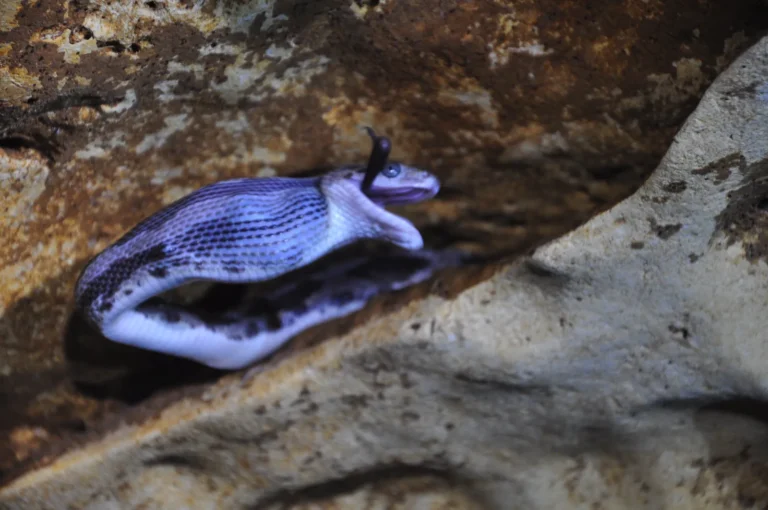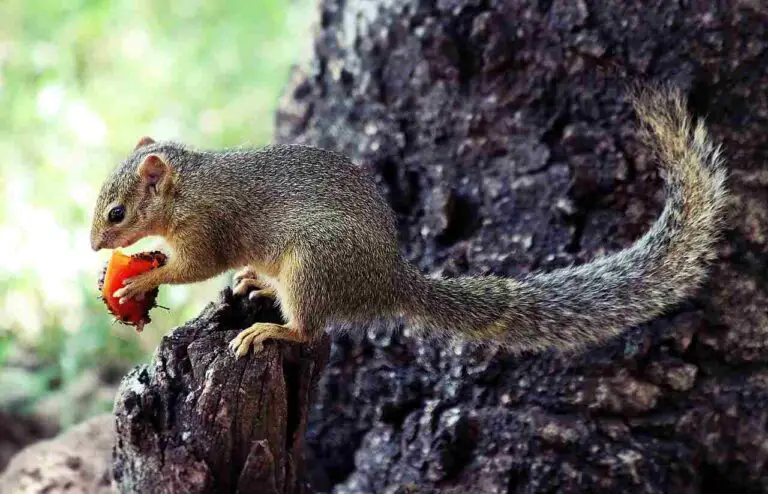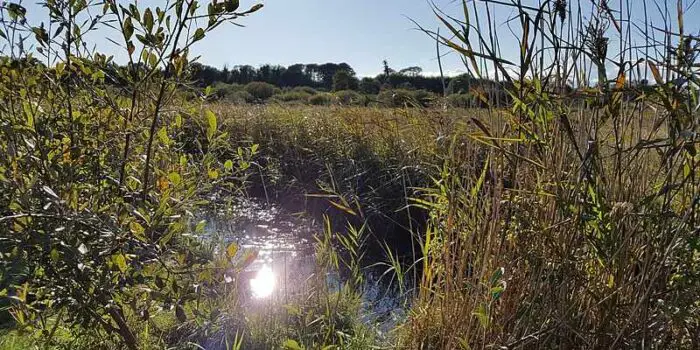Tundra Biome Definition, Facts, Types, Description and Importance
Tundra biome is a regional zone which typically has low temperature and sparse vegetation.
A biome is itself a geographic area or ecosystem which is defined on the basis of biotic components like organic species, and abiotic components such as climate [3].
The tundra biome was earlier described using a Finnish word; Tunturi, which refers to a barren or treeless land [4]. However, the term tundra derives from a Russian word; тундра (tūndâr), which refers to a treeless highland or mountain region.
In this article, tundra biome is discussed according to the following outline;
-Tundra Biome Definition: 7 Ways to Define the Tundra Biome
-Basic Facts about the Tundra Biome
-Tundra Types: Classification of the Tundra Biome
-Tundra Biome Description: Geographic, Physical and Biochemical Tundra Features
-Environmental Importance of the Tundra Biome
-Some Examples of Places with Characteristics of the Tundra Biome
Tundra Biome Definition: 7 Ways to Define the Tundra Biome
Tundra biome is a type of ecological zone where the growth of vegetation is severely limited by a combination of unfavorable seasonal and edaphic factors, as well as low temperature conditions [8].
The tundra biome can be described with clearer reference to the overall environmental conditions in this biome, as follows;
Tundra biome is a zone or area of land whose characteristics include harsh-cold and frozen conditions, short growing seasons, and a highly adapted plant and animal population.
In terms of precipitation and humidity, the tundra biome possesses features that make it similar to a land area that has been affected by desertification and other unfavorable physicochemical effects. This perspective is portrayed in the following definition;
The tundra biome is the coldest of all terrestrial biomes, having bare, rocky landscape and low precipitation levels that make survival difficult for most species, as is the case in deserts [6].
Topography and relief in a tundra biome are usually modified by frost, and the flora and fauna species in this zone are adapted to the low temperature and lack of vegetation. The following definition further expresses this;
Tundra biome is a cold ecologic zone with average summer and winter temperatures of 65°F and -40°F respectively, as well as flora and fauna like cotton grass, Arctic willow, Labrador tea, arctic hares, lemmings and voles.
Another criterion which can be used to define the tundra biome is its range of geographic coordinates, as follows;
Tundra biome is the coldest ecological zone on Earth, occurring between latitudes 60° and 75°; along the North American and Eurasian Arctic coast [1].
An alternative description of the coordinates of the tundra biome is >66° within the northern or southern hemisphere.
Basic climatic characteristics may also be used to define the tundra biome, as follows;
The tundra biome is a biome which is characterized by extreme low temperatures for six to ten months per annum, windy conditions of between 30 to 60 mph (miles per hour), and poor areal drainage.
Lastly, the tundra can be defined based on its geographic scope of occurrence;
Tundra biome is a biome which typically occurs in the northern reaches of the Arctic Circle, and at high alpine altitudes, and which has bioclimatic characteristics like modified relief, low temperature, high winds, and low biodiversity.
Basic Facts about the Tundra Biome
1). The tundra biome is the coldest ecologic zone on Earth
2). It is of three types; Arctic, Antarctic, and Alpine tundra
3). The Arctic tundra occurs along, and at the northern extremes of the Arctic Circle
4). Antarctic and Alpine tundra occur in the region of Antarctica and in mountainous areas respectively
5). Topographic conditions in the Arctic and Antarctic are generally flat or level, while the Alpine tundra has hilly landform characteristics
6). The tundra is known for low biodiversity. Species in the tundra have characteristics like morphological resilience, adaptive behaviors
7). Precipitation is low in the tundra, with short growing (summer) seasons and prolonged winters
8). Tundra subsoil often occurs in a frozen state and is called permafrost
Tundra Types: Classification of the Tundra Biome
The three (3) types of tundra biome are Arctic, Antarctic, and Alpine Tundra [6]. These are differentiated based on their basic geographic and ecological characteristics.
The three types are discussed as follows;
1). Arctic Tundra Biome
Arctic tundra occurs at high altitude in the Northern Hemisphere, extending beyond the upper regions of the Arctic Circle and partly encircling the North Pole.
This type of tundra biome is found in places like Russia, Scandinavia, Canada, Greenland and Alaska [5].
The Arctic tundra typically has subsoil which is permanently frozen, called ‘permafrost’ [12].
While the thickness of permafrost differs, it may range from 30 to 90 cm downward from the ground surface [9]. As a result of this condition, vegetation growth is severely limited.
Climatic conditions in the Arctic tundra include prolonged winter with temperature of -30°C to -50°C, summer temperature of 3°C to about 14°C, and air currents of 30 to 60 mph.
The water cycle in Arctic tundra is not very active, with low levels of precipitation (150 to 250 mm) and low evapotranspiration rates.
Sparse vegetation growth may occur during the brief summer period as the thickness of permafrost is reduced. However, root penetration is usually shallow, allowing only low-demand, resilient plant species to survive. Also, the thawing of permafrost during summer leads to the formation of small lakes and marshes with poor drainage characteristics.
Biodiversity is sparse in the Arctic tundra biome. Surviving plant species include reindeer lichen, Labrador tea and blueberry. Musk ox, reindeer, Arctic fox and snow owl are examples of fauna in this ecological zone.

2). Antarctic Tundra Biome
The Antarctic Tundra biome covers the region of Antarctica, its environs its surrounding islands.
In terms of basic biological and climatic characteristics, this biome is similar to the Arctic tundra, Temperatures in the Antarctic Tundra are so low that natural landscape modification and geochemical cycles are not very active.
As a result, vegetation-growth is difficult and rare, with a few areas allowing the survival of resilient and adapted species like algae, lichens, liverworts and mosses [11].
Notably, conditions in the Antarctic Peninsula are tolerant of biologic survival, so that several Antarctic tundra species may be found here.
In comparison to the Arctic, biodiversity in the Antarctic tundra biome is low. This is partly due to the fact that the Antarctic is geographically isolated from surrounding continental land masses [2].
Terrestrial mammals are the rarest group in the Antarctic, while migrant species like penguins, seals and albatrosses are more dominant. The few surviving terrestrial mammals are mainly small carnivores and burrowing rodents.

3). Alpine Tundra Biome
The Alpine tundra is a high-altitude low-biodiversity biome which occurs above the vegetation boundary or timberline in mountainous regions.
What makes the Alpine tundra biome unique is the fact that it occurs globally, and is not restricted to specific geographic areas like the Arctic and Antarctic [1]. However, the basic biological and climatic characteristics of this ecological zone are similar to those of the Arctic.
In the Alpine tundra, vegetation growth (especially for trees) is almost impossible, due to the influence of high altitude (height above sea level) on soil, climate, energy pyramid, and biological reproduction and dispersal.
Another unique feature of the Alpine tundra is the absence of permafrost in most parts of this ecosystem [7]. This absence is mainly due to soil characteristics. Generally, soils in the Alpine tundra have better porosity and permeability and are better drained than soils in other types of tundra biome.
Also as a result of better drainage, surface water accumulations in the form of lakes and marshes during summer are less common.
The few surviving plant species in the Alpine tundra have adaptive features like low height, minimal water and nutrient demand, low transpiration rates. Some of these include lichens, sedges and mosses.
Like other types of tundra, the Alpine experiences relatively short summer seasons during which most of plant growth, biodegradation and other natural, biochemical processes occur.
It is estimated that the average elevation of Alpine tundra around the world is between 11,000 and 11,500 ft. Effects of tundra bioclimate can also be encountered below this elevation, in areas such as the sub-Alpine ecological zone which occurs below the timberline.
Some Alpine fauna include mountain sheep, elk, and red deer.

The following table summarizes the basic attributes and comparison of the three types of tundra biome;
| Arctic Tundra | Antarctic Tundra | Alpine Tundra |
| Restricted to the upper northern hemisphere | Covers the region of Antarctica | Occurs globally |
| Thick permafrost layer and low precipitation | Permafrost occurs here | No permafrost |
| Restricted, specific and adapted biological populations | Low biodiversity | Relatively broad scope of biodiversity |
Tundra Biome Description: Geographic, Physical and Biochemical Tundra Features
In summary, the tundra biome may be described as a cold region with flat topography, poor drainage and frozen soil, which may occur at low or high altitude, and which has low precipitation and biodiversity, with the presence of plants and animals like the red deer, Arctic fox, lichens and moss.
1). Basic Geography
Globally, the tundra biome has an area of approximately 11,563,300 km2.
Although this ecological zone may vary significantly in its topographic characteristics, it usually occurs as a level land with sparse vegetation.
The tundra may occur at low altitude in regions north of the Arctic, or at high altitude in mountainous regions around the world.
Ground features are mostly frost and sparse vegetation for most of the year, while small water bodies may form during the growing season. Weathering usually occurs through thaw-freeze cycles, leading to cracking of rock material.
A term commonly used to describe permafrost soil is Cryosol; which is a glacier-modified soil with a distinct mineral composition [13].
Tundra soils often lack sufficient nutrients and suitable characteristics to support plant growth, although they may also contain significant concentration of minerals like nitrogen and phosphorus [9].
These minerals are usually derived from the slow decomposition of biomass, and subsequently stored in the soil. Tundra soil also acts as a natural carbon capture and storage system, by sequestering significant amounts of carbon dioxide within the permafrost.
Wind may sometimes act as an agent of physical weathering and landform modification in a tundra biome, although glacier is the predominant weathering agent.
2). Climate
Climate in the tundra biome is generally cold and windy.
Temperature in this ecological zone is mostly below 0°C, with an upper margin of about 10°C in summer. This corresponds to the Köppen climatic classification ET [14], although some tundra regions might exceed these conditions occasionally.
The result of these climatic conditions is a state of near-permanent glaciation, with minor thawing of frost on the surface during the summer period.
Low atmospheric vapor pressure is another characteristic of the tundra. As a result, precipitation is low and hardly exceeds 15 inches per annum. The survival of biodiversity and the formation of marshes and lakes under these conditions are due to low evapotranspiration and energy conservation.
3). Biodiversity: Plants and Animals in the Tundra
Plants in the tundra are generally resilient; low-lying and low demanding species including grasses, lichens, mosses, dwarf shrubs, herbs and sedges.
These plants are adapted to survive in the extreme physical and biochemical conditions of the ecosystem. Typical features of tundra plants include shallow roots, low height, resilient morphology and low transpiration rates.
It is important to note that despite the general resilience and adaptation of tundra plants, the species which survive in any given tundra ecosystem depend on the specific range of characteristics (geographic, edaphic, biochemical, climatic) of the area, at the given time.
Animals in the tundra, such as Arctic hares; lemmings, reindeer, squirrels, albatrosses and voles, have various morphological and behavioral adaptations that enable them survive the harsh conditions.
Some of the adaptive features of tundra animals include thick hide, hooves and fat layer for insulation and protection from cold. Behavioral adaptations of these fauna include burrowing hibernation, low dietary demands, rapid reproduction during the summer, and migration during the winter.
Environmental Importance of the Tundra Biome
The tundra biome is important to the environment by being essential to global climatic balance, providing habitat for several organisms and slowing the pace of global warming.
The overall climatic and biological equilibrium on Earth depends on the existence and stability of various major ecological zones, one of which is the tundra. This implies that a disintegration of the tundra biome will offset the natural climatic balance of the Earth.
Also, the tundra is one of the least explored regions of the world, serving as natural habitat to various important species. Studying and exploring this biome might give insight into some useful methods and concepts like carbon sequestration and natural energy conservation.
Lastly, the tundra biome is affected by, as well as a potential contributor to, climate change.
Rising global temperatures pose a threat to the existence of the tundra, by facilitating the thawing of parts of the biome which have permanently frozen for since prehistoric times [10]. Permafrost thawing can lead to the release of large volumes of trapped carbon dioxide; a greenhouse gas, which may further contribute to climate change.
Climate change may also increase the rate of evapotranspiration and biodegradation, both of which may release gases like methane; carbon dioxide and water vapor into the atmosphere.
Some Examples of Places with Characteristics of the Tundra Biome
Places which fall within the tundra biome include Igaluit (Canada), Mount Fuji (Japan), Tiksi (Russia), Kasprowy Wierch (Poland), Utqiagvik (United States), Apartaderos (Venezuela), Putre (Chile), Yu Shan (Taiwan), and Cerro de Pasco (Peru).
Conclusion
A tundra biome is an ecological zone whose characteristics include cold and windy climate, sparse vegetation, and low biodiversity.
Types of tundra biome are;
- Arctic Tundra
- Antarctic Tundra
- Alpine Tundra
References
1). Balasubramanian, A. (2013). “THE TUNDRA BIOME.” Available at: https://www.researchgate.net/publication/314211666_THE_TUNDRA_BIOME. (Accessed 28 June 2022).
2). Benninghoff, W. S. (1967). “The Antarctic ecosystem.” Environment International 13(1):9-14. Available at: https://doi.org/10.1016/0160-4120(87)90037-7. (Accessed 28 June 2022).
3). Dotson, J. D. (2019). “Biome: Definition, Types, Characteristics & Examples.” Available at: https://sciencing.com/biome-definition-types-characteristics-examples-13719223.html. (Accessed 28 June 2022).
4). Francini, G. (2013). “Plant-soil interactions in cold climate.” Available at: https://www.researchgate.net/publication/262224834_Plant-soil_interactions_in_cold_climate. (Accessed 28 June 2022).
5). Frost, G. V.; Bhatt, U. S.; Epstein, H. E.; Berner, L. T.; Bierke, J. W.; Goetz, S. J.; Lara, M. J.; Macander, M. J.; Phoenix, G. K.; Raynolds, M. K.; Tømmervik, H. (2020). “THE ARCTIC STATE OF THE CLIMATE IN 2019 Arctic – Tundra Greenness.” Available at: https://www.researchgate.net/publication/343818345_THE_ARCTIC_STATE_OF_THE_CLIMATE_IN_2019_Arctic_-_Tundra_Greenness. (Accessed 28 June 2022).
6). Long, K. (2018). “Biotic & Abiotic Factors in the Tundra.” Available at: https://sciencing.com/biotic-abiotic-factors-in-the-tundra-12083312.html. (Accessed 28 June 2022).
7). Makoto, K.; Bryanin, S.; Lisovskii. V. V.; Kushida, K.; Wada, N. (2015). “Dwarf pine invasion in an alpine tundra of discontinuous permafrost area: effects on fine root and soil carbon dynamics.” Available at: https://www.researchgate.net/publication/286930824_Dwarf_pine_invasion_in_an_alpine_tundra_of_discontinuous_permafrost_area_effects_on_fine_root_and_soil_carbon_dynamics. (Accessed 28 June 2022).
8). Myers-Smith, I. H.; Elmendorf, S. C.; Beck, P. S. A.; Wilmking, M.; Hallinger, M.; Blok, D.; Tape, K. D.; Rayback, Macias-Fauria, M.; Forbes, B. C.; Speed, J. D. M.; Boulanger-Lapointe, N.; Rixen, C.; Lévesque, E.; Schmidt, N. M.; Baittinger, C.; Trant, A. J.; Hermanutz,, L.; Collier, L. S.; Dawes. M. A.; Lantz, T. C.; Weijers, S.; Jørgensen, R. H.; Buchwal, A.; Mickiewicz, A.; Buras, A.; Naito, A. T.; Rayolainen, V.; Schaepman-Strub, G.; Wheeler, J. A.; Wipf, S.; Guav, K.; Hik, D. S.; Vellend, M. (2015). “Climate sensitivity of shrub growth across the tundra biome.” Nature Climate Change 5(9). Available at: https://doi.org/10.1038/nclimate2697. (Accessed 28 June 2022).
9). Rasmussen, L. H.; Zhang, W.; Ambus, P.; Jansson, P.; Kitzler, B.; Elberling, B. (2021). “Nitrogen Transport in a Tundra Landscape: The Effects of Early and Late Growing Season Lateral N Inputs on Arctic Soil and Plant N Pools and N2O Fluxes.” Available at: https://doi.org/10.21203/rs.3.rs-505587/v1. (Accessed 28 June 2022).
10). Schuur, E. A. G.; Abbott, B. W. (2011). “Climate Change: High Risk of Permafrost Thaw.” Nature 480(7375):32-3. Available at: https://doi.org/10.1038/480032a. (Accessed 28 June 2022).
11). Seppelt, R.; Türk, R.; Green, T. G. A.; Moser, G.; Pannewitz, S.; Sancho, L. G.; Schroeter, B. (2010). “Lichen and moss communities of Botany Bay, Granite Harbour, Ross Sea, Antarctica.” Antarctic Science 22(06):691 – 702. Available at: https://doi.org/10.1017/S0954102010000568. (Accessed 28 June 2022).
12). Siewert, M. B.; Lantuit, H.; Richter, A.; Hugelius, G. (2021). “Permafrost Causes Unique Fine‐Scale Spatial Variability Across Tundra Soils.” Global Biogeochemical Cycles 35(3). Available at: https://doi.org/10.1029/2020GB006659. (Accessed 28 June 2022).
13). Vlček, V.; Pospíšilová, L.; Uhlik, P. (2017). “Mineralogy and chemical composition of Cryosols and Andosols in Antarctica.” Soil and Water Research 13(2). Available at: https://doi.org/10.17221/231/2016-SWR. (Accessed 28 June 2022).
14). Wang, M.; Overland, J. E. (2004). “Detecting Arctic Climate Change Using KÖppen Climate Classification.” Climatic Change 67(1):43-62. Available at: https://doi.org/10.1007/s10584-004-4786-2. (Accessed 28 June 2022).



